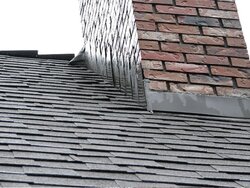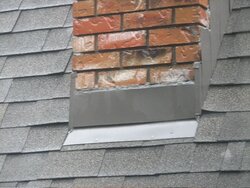Just a bit of background:
The house I live in is about 35 years old and the chimney is a brick chimney. From about 2000 to 2005 the chimney went unused. In the summer of 2005 I had the roof redone on the house and a few months later, after a lot of rain, I had a leak around the chimney. I called the roofer, he came back and while he did redo the flashing he said it was more likely that the chimney got very wet because it was not being dried out by being used. He suggested I seal the outside of the bricks with a sealant of some sort.
My question has two parts.
1)Now that I am using the chimney (with a stainless liner) do I need to seal it?
2)If I need to seal it, what should I use?
Thanks very much for all your help.
The house I live in is about 35 years old and the chimney is a brick chimney. From about 2000 to 2005 the chimney went unused. In the summer of 2005 I had the roof redone on the house and a few months later, after a lot of rain, I had a leak around the chimney. I called the roofer, he came back and while he did redo the flashing he said it was more likely that the chimney got very wet because it was not being dried out by being used. He suggested I seal the outside of the bricks with a sealant of some sort.
My question has two parts.
1)Now that I am using the chimney (with a stainless liner) do I need to seal it?
2)If I need to seal it, what should I use?
Thanks very much for all your help.



